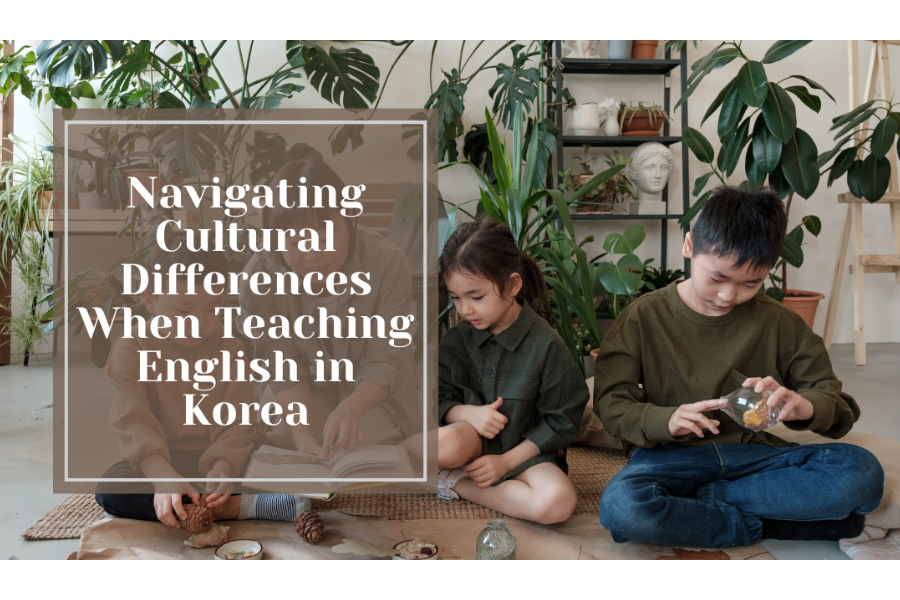
Navigating Cultural Differences When Teaching English in Korea
Once you arrive in Korea, you will have to navigate the cultural differences and adjust to the new way of life. Teaching English in Korea can be an exciting and rewarding experience, but it can also be challenging, especially when it comes to navigating cultural differences. To succeed as an English teacher in Korea, it’s essential to understand and respect the culture and customs of your students and colleagues.
Here are some tips on how to navigate cultural differences when teaching English in Korea.
1. Learn about Korean culture:
One of the most important things you can do to navigate cultural differences is to learn as much as you can about Korean culture. This includes the history, customs, and social norms of the country. By doing so, you’ll be able to understand the perspectives and behaviors of your students and colleagues.
2. Learn the Language:
One of the best ways to understand and connect with people is by learning their language. Although English is widely spoken in Korea, learning some Korean will help you connect with the locals and understand their culture better. It is also essential to learn some basic Korean expressions, greetings, and phrases that can be useful in your day-to-day communication.
3. Be Respectful of Korean Culture:
Korea has a rich cultural heritage, and it is important to respect and honor their customs and traditions. Learn about Korean culture, including food, dress, customs, and etiquette. Always be respectful and polite to your students, colleagues, and locals you interact with. This will help you build strong relationships and create a positive work environment.
4. Be aware of the power distance:
Korean culture has a high power distance, which means that there is a significant power gap between people in authority and those who are not. As a teacher, you are in a position of authority, and your students will expect you to lead and guide them. It’s important to be aware of this power distance and to show respect to your students, even if they are younger or less experienced than you.
5. Embrace Korean Food:
Korean cuisine is delicious and varied, and it is an essential part of the culture. Try different Korean dishes and explore the local food scene. Eating with your colleagues and students is a great way to bond and build relationships. Korean people also appreciate when foreigners show an interest in their food and culture.
6. Using appropriate language and gestures Korean culture places a lot of importance on politeness and respect, and this is reflected in the language and gestures that are used. It’s essential to use appropriate language and gestures when interacting with your students and colleagues. For example, it’s important to use honorifics when addressing someone who is older or of higher status than you.
7. Be mindful of non-verbal communication Non-verbal communication is just as important as verbal communication in Korean culture. It’s essential to be mindful of your non-verbal communication, such as facial expressions, gestures, and body language. In Korean culture, direct eye contact can be seen as confrontational, so it’s important to be aware of this and to adjust your behavior accordingly.
8. Build Relationships:
In Korea, building relationships is crucial for success. Take the time to get to know your students, colleagues, and other locals you meet. Socializing is an essential part of Korean culture, so don’t be afraid to join social gatherings, such as dinners, parties, and events. This will help you build strong connections and create a positive work environment.
9. Stay Open-minded:
Teaching English in Korea can be challenging, but it can also be a rewarding experience. Be open to new experiences, ideas, and perspectives. Don’t be afraid to ask questions and learn from your students, colleagues, and locals you interact with. Staying open-minded and adaptable will help you navigate cultural differences and thrive in your new environment.
10. Embrace differences Finally, it’s important to embrace cultural differences and to see them as an opportunity for learning and growth. By embracing differences, you’ll be able to build stronger relationships with your students and colleagues and create a more positive and inclusive learning environment.
In conclusion, navigating cultural differences when teaching English in Korea requires an open mind, a willingness to learn, and respect for the culture and customs of your students and colleagues. By following these tips, you’ll be able to build stronger relationships, create a positive learning environment, and succeed as an English teacher in Korea.







